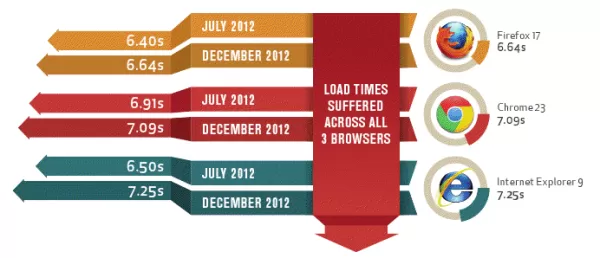ui/ux of website graphics on audience attraction
The UI/UX (User Interface/User Experience) of website graphics plays a significant role in attracting the audience and engaging them on a website. Here are some ways in which UI/UX of website graphics can impact audience attraction:
Visual Appeal:
High-quality and visually appealing graphics create a positive first impression on visitors. The use of attractive colors, visually pleasing layouts, and visually appealing images or illustrations can help capture the attention of the audience and make them more likely to explore the website further.
Consistent Branding:
Consistency in branding across the website graphics helps in building brand recognition and trust. The use of consistent color schemes, typography, and visual elements that align with the brand identity creates a cohesive and professional look, making the audience more likely to engage with the website.
Usability and Navigation:
The UI/UX design should prioritize usability and easy navigation. Clear and intuitive navigation menus, prominent call-to-action buttons, and well-organized content help users find the information they are looking for quickly and effortlessly. A smooth and user-friendly experience encourages visitors to stay longer on the website.
Responsive Design:
With the increasing use of mobile devices, it is essential to have a responsive design that adapts to different screen sizes. Mobile-friendly graphics and layouts ensure that the website looks visually appealing and functions well on smartphones and tablets. By providing a seamless experience across devices, you can attract and engage a larger audience.
Loading Speed:
Slow-loading graphics can frustrate visitors and lead to high bounce rates. Optimizing website graphics for fast loading speeds is crucial for retaining the audience’s attention. Compressing images, utilizing lazy loading techniques, and optimizing code can help improve the overall performance of the website.
Clear Communication:
Website graphics should effectively communicate the website’s purpose, key messages, and offerings. Well-designed visuals, such as icons, infographics, and illustrations, can simplify complex information and make it easier for visitors to grasp the content quickly. Clear and concise messaging through graphics enhances audience understanding and engagement.
Interactive Elements:
Incorporating interactive elements in website graphics can enhance user engagement. Features like sliders, interactive infographics, image galleries, or embedded videos can make the website more dynamic and encourage visitors to interact with the content, leading to a more engaging user experience.
In conclusion, the UI/UX of website graphics plays a crucial role in attracting and engaging the audience. By focusing on visual appeal, consistent branding, usability, responsiveness, loading speed, clear communication, and interactive elements, you can create a compelling user experience that captivates your audience and encourages them to explore your website further.

How can I optimize website graphics for fast loading speeds?
Optimizing website graphics for fast loading speeds is essential to ensure a smooth user experience and minimize bounce rates. Here are some techniques you can use to optimize your website graphics:
Image Compression:
Compressing your images can significantly reduce their file size without compromising much on visual quality. You can use image compression tools or plugins to optimize your images. Formats like JPEG and PNG offer various compression options, so experiment with different settings to find the right balance between file size and image quality.
Proper Image Formatting:
Use the appropriate image format for each graphic element. JPEG is suitable for photographs and complex images with many colors, while PNG is better for graphics with transparency or simple images with fewer colors. Using the correct format ensures efficient file sizes without sacrificing visual quality.
Resize and Crop Images:
Make sure to resize and crop your images to the exact dimensions required on your website. Uploading oversized images and relying on CSS or HTML to resize them can slow down the loading time. Use image editing software or online tools to adjust the dimensions of your images before uploading them.
Lazy Loading:
Implement lazy loading for images, especially for long-scrolling pages or pages with many images. Lazy loading defers the loading of off-screen images until the user scrolls to them. This technique can significantly improve initial page load times as only the visible images are loaded initially.
Use CSS Effects:
Instead of using images for background patterns, gradients, or simple shapes, consider using CSS effects like gradients, shadows, and borders. CSS effects are lightweight and load quickly, resulting in faster page load times.
Content Delivery Network (CDN):
Utilize a CDN to deliver your website’s graphics. CDNs store your website’s static content, including images, on multiple servers located worldwide. When a user requests your website, the content is delivered from the server closest to their location, reducing latency and improving loading speeds.( Methods of Compressing CSS/HTML/JS Files Using CDN )
Browser Caching:
Configure browser caching to allow returning visitors to load your website faster. When a user visits your website for the first time, the browser stores static resources like images locally. On subsequent visits, these resources are loaded from the cache, reducing the need to download them again.
Minify CSS and JavaScript:
Minifying your CSS and JavaScript files removes unnecessary characters like white spaces, comments, and line breaks, reducing the file size. Smaller file sizes result in faster loading times. There are online tools and plugins available that can automatically minify your code.
Performance Optimization Plugins:
Consider using performance optimization plugins or tools specific to your website platform or content management system. These plugins can automate various optimization techniques, including image compression, lazy loading, and caching, making it easier to optimize your website graphics.
Remember to test your website’s loading speed regularly using tools like Google PageSpeed Insights or GTMetrix. These tools provide insights and recommendations to help you further optimize your website graphics and overall performance.
What are some best practices for incorporating interactive elements in website graphics?
Incorporating interactive elements in website graphics can enhance user engagement and create a more immersive user experience. Here are some best practices to consider when adding interactive elements to your website graphics:
Purposeful Interactivity:
Ensure that the interactive elements serve a clear purpose and add value to the user experience. Interactive elements should support the content or functionality of the website, rather than being added for the sake of being interactive. Consider how the interactivity can enhance user understanding, provide additional information, or encourage user actions.
Intuitive Design:
Design the interactive elements to be intuitive and easy to use. Users should be able to understand how to interact with them without confusion or needing explicit instructions. Use familiar symbols, labels, or visual cues to indicate interactivity. Keep the design simple and avoid overwhelming users with too many interactive elements on a single page.
Responsiveness:
Ensure that interactive elements respond quickly and smoothly to user actions. Delayed or laggy responses can frustrate users and detract from the overall experience. Optimize the performance of interactive elements to ensure they load quickly and provide immediate feedback when users interact with them.
Mobile-Friendly Considerations:
When incorporating interactive elements, make sure they are mobile-friendly and work well on smaller screens. Consider the limitations of touch interactions and design elements that are easy to tap or swipe. Test the interactive elements on various mobile devices to ensure they function properly and provide a seamless experience.
Progressive Enhancement:
Implement interactive elements using a progressive enhancement approach. This means that the core functionality and content should be accessible and usable for all users, including those who may not have access to or be able to interact with the interactive elements. The interactive elements can then be added as enhancements for users with capable devices or browsers.
Feedback and Visual Cues:
Provide clear feedback and visual cues to indicate the state of interactive elements. Use visual changes such as color, animation, or highlighting to indicate when an element is being hovered over, clicked, or activated. Providing feedback helps users understand the outcome of their interactions and reinforces a sense of control.
Accessibility Considerations:
Ensure that interactive elements are accessible to users with disabilities. Use proper semantic markup, provide alternative text for non-text elements, and ensure that interactive elements can be accessed and operated using keyboard navigation. Consider using ARIA (Accessible Rich Internet Applications) attributes to enhance the accessibility of interactive elements.
User Testing and Iteration:
Test the interactive elements with real users to gather feedback and identify areas for improvement. User testing can help you understand how users interact with the elements, identify any usability issues, and gather insights on how to refine the design and functionality. Iterate and refine the interactive elements based on user feedback to optimize the user experience.
By following these best practices, you can incorporate interactive elements effectively, creating an engaging and user-friendly experience that encourages users to interact with your website graphics.

What is UI/UX on the site?
UI/UX stands for User Interface/User Experience. It refers to the design and overall experience that a user has when interacting with a website or application.
User Interface (UI) encompasses the visual elements, layout, and interactive components of a website or application. It focuses on how the interface looks and how users interact with it. This includes elements such as buttons, menus, forms, icons, typography, color schemes, and overall visual aesthetics. The goal of UI design is to create an intuitive, visually appealing, and user-friendly interface that allows users to navigate and interact with the website or application easily.
User Experience (UX) focuses on the overall experience and satisfaction that a user has while interacting with a website or application. It encompasses the user’s emotions, perceptions, and responses throughout their entire journey on the site. UX design considers factors such as usability, accessibility, performance, information architecture, content organization, and the fulfillment of user needs and goals. The goal of UX design is to create a positive and meaningful user experience that meets user expectations, enhances satisfaction, and achieves the desired business goals.
In summary, UI/UX design is concerned with creating an interface that is visually appealing, easy to use, and provides a positive and engaging user experience. It involves a combination of design principles, user research, and iterative testing to ensure that the website or application meets the needs and expectations of its users.
